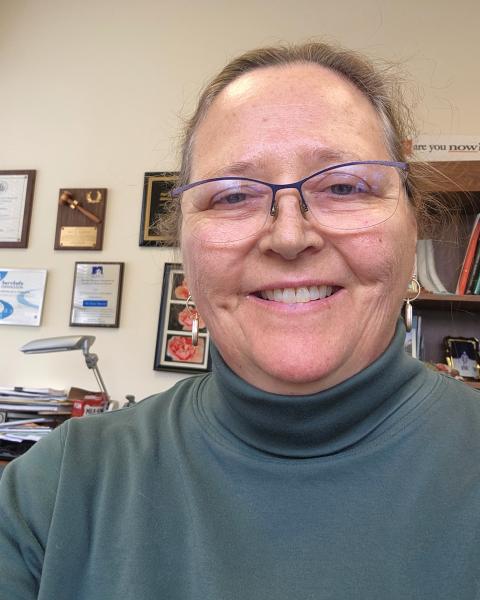Cleaning and sanitizing best management practices are essential steps in keeping food safe to eat. Soil, chemicals or other organic materials can contaminate food contact surfaces in your farm operation. When food comes in contact with unclean surfaces, it may become unsafe to eat and spoil faster resulting in loss of product revenue. Implementing routine cleaning and sanitizing procedures will help maintain the safety of food, decrease food spoilage and increase your business profits.
Food Contact Surfaces
A food contact surface is any surface, tool or piece of equipment that comes into contact with food, either directly or indirectly. A typical farming operation has a wide range of food contact surfaces, including: preparation tables, conveyors, wash tanks, spinners, food bags, cartons and bins. Smaller pieces of equipment such as knives, scissors, hoses and brushes can also come in contact with food.
You can identify food contact surfaces by observing the flow of food or the steps your produce takes from harvesting to customer sale. Smooth, nonporous materials make the best food contact surfaces, because they can be easily cleaned and sanitized. Rough surfaces like wood may be more difficult to clean, but you can follow recommended cleaning methods to keep them as safe as possible.
Larger pieces of stationary equipment, such as conveyors, wash tanks and storage bins, need to be cleaned regularly and sanitized as necessary. When considering the purchase of a new piece of equipment for your operation, make sure it can be thoroughly cleaned and sanitized. Store small tools and pieces of equipment in a protected location to keep them safe from contamination. Label equipment and tools for its their intended use.
Wood Surfaces
Food contact surfaces that are made from a smooth, nonporous material approved for food contact are the easiest to clean and sanitize, as necessary. However, many farms continue to use wooden equipment, containers or surfaces out of necessity or preference. Although wooden equipment is not easy to clean, regular cleaning is highly recommended. Wooden surfaces and equipment should be rinsed, washed with soap or detergent and potable water using a rough bristled brush and then rinsed well before being allowed to air dry. Sanitize when necessary. Examples of common wooden equipment on the farm include barrel washers, crates, bins and walls of the pack shed.
Cleaning
Cleaning is the physical removal of soil, dust, grease and microbes from a surface. Cleaning includes using a soap or detergent to scrub these contaminants from a surface. The general procedure for cleaning a surface is to wet, scrub, rinse and air dry. Rinsing off larger debris before scrubbing will make the process more effective. Always use potable (drinkable) water during the cleaning process.
The process of washing is essential to prevent the build-up of biofilms. Biofilms are invisible films produced by bacteria, yeasts and/or molds that can be very difficult to remove once established. The film is produced as a protective mechanism for the microorganism. Maintaining a cleaning and sanitizing routine will help to prevent their development in your operation.
Sanitizing
Sanitizing is the process of decreasing the number of microorganisms to a safe level. Soil, grease, or dust will inactivate sanitizers, so it is important to clean and rinse a surface before you sanitize it.
Sanitizers are pesticides. Nationally, pesticides are regulated by the U.S. Environmental Protection Agency (EPA). When using sanitizers on food contact surfaces, check to see if the label includes an EPA registration number and then follow all label directions and all relevant state pesticide regulations.
When choosing a chemical sanitizer for your operation, consider the safety for workers and the environment, stability, water quality, pH, and non-corrosiveness. Use sanitizers that are approved for use on food contact surfaces based on the label information. The manufacturer is a good resource when determining whether a specific sanitizer is safe for your operation.
Approved sanitizers for use with food contact surfaces include chlorine, peroxyacetic acid, iodine, and quaternary ammonium or “quats.” These products are available in different forms and concentrations.
To make a concentration of sanitizer that is safe for the intended use, mix a specific amount of sanitizer with potable water. Always measure sanitizer amounts. The concentration is measured in parts per million, or ppm, and will be specified on the product label.
Use test strips to determine the concentration of your sanitizing solution. You can purchase them from your chemical supply company. Be sure to follow the instructions for each type of test strip and use a test strip designed for a specific sanitizer.
Test the concentration of your sanitizing solution when itis initially mixed, and periodically during use, to ensure the
concentration is still at an effective level. Sanitizing solutions can lose effectiveness over time due to exposure to air, organic materials, soap or other factors that cause the chemical to dissipate.
The Cleaning and Sanitizing Process *
• Wet the area with potable water, rinse off any visible debris.
• Scrub surface with soap or detergent and potable water to physically remove soil.
• Rinse surface with potable water.
• Apply sanitizer following manufacturer’s directions.
• Allow contact with surface for recommended time.
• Allow surface to air dry. Don’t use a cloth towel to dry. Cloth towels can recontaminate the surface.
* sanitizing may not be necessary in all cases where a cleaning step is necessary.
Did You Know?
Soil, grease or dust will inactivate sanitizers so it is important to clean and rinse a surface before you sanitize it.
Recordkeeping
Several simple recordkeeping strategies will ensure your cleaning and sanitizing procedures are being implemented as planned and as scheduled for your operation.
A Standard Operating Procedure, or SOP, is a step-by-step guide
to describe how to do a certain task. Cleaning and sanitizing SOPs work very well as a training tool, or as a resource for current employees. SOPs, along with training, can help employees complete the task correctly by following the outline steps. Keep the SOP in an accessible place for employees or volunteers.
A cleaning and sanitizing schedule and completion log will helpyou make cleaning and sanitizing a regular part of your operation.
In general, an SOP will answer the following four questions.
1) What needs to be cleaned?
2) How should each piece of equipment or food contract surface be cleaned?
3) When should equipment be cleaned?
4) Who will do the cleaning and sanitizing and how will it be documented, (i.e. staff notes completion on a checklist and supervisor monitors and signs off)?
Did You Know?
Implementing routine cleaning and sanitizing procedures will help maintain the safety offood, decrease food spoilage and minimize waste.
Learn more in our Fact Sheet: Farm Food Safety — Cleaning and Sanitizing Food Contact Surfaces
Created: February 2018
Updated: April 2019
About the Author
Jessica Sprague is a former Food Safety Field Specialist with UNH Cooperative Extension.
This fact sheet was reviewed and edited by Food Safety Area of Expertise and FSMA (Food Safety Modernization Act) team members.
For More Information
State Office
Taylor Hall
59 College Rd.
Durham, NH 03824
http://extension.unh.edu
Education Center and Information Line
answers@unh.edu
1-877-EXT-GROW (1-877-398-4769)
9 am–2 pm M–F
UNH Cooperative Extension brings information and education in to the communities of the Granite State to help make New Hampshire’s individuals, businesses, and communities more successful and its natural resources healthy and productive. For 100 years, our specialists have been tailoring contemporary, practical education to regional needs, helping create a well-informed citizenry while strengthening key economic sectors.
The University of New Hampshire Cooperative Extension is an equal opportunity educator and employer. University of New Hampshire, U.S. Department of Agriculture and N.H. counties cooperating.


